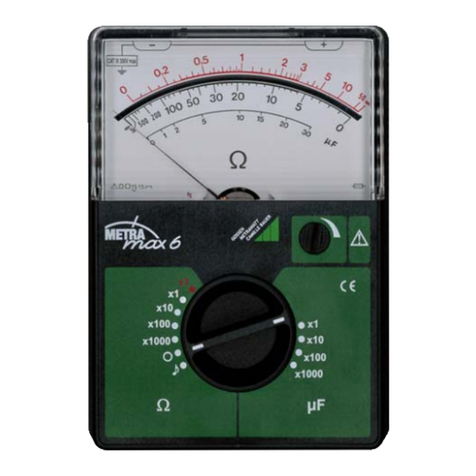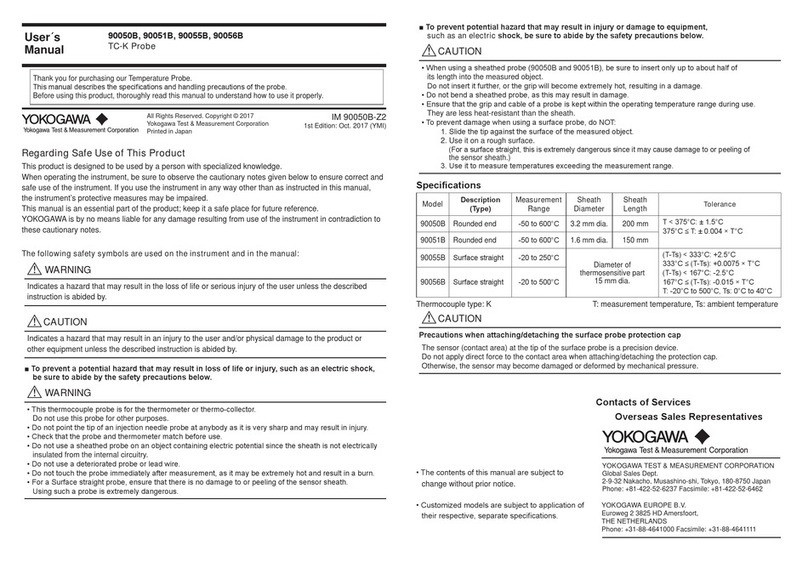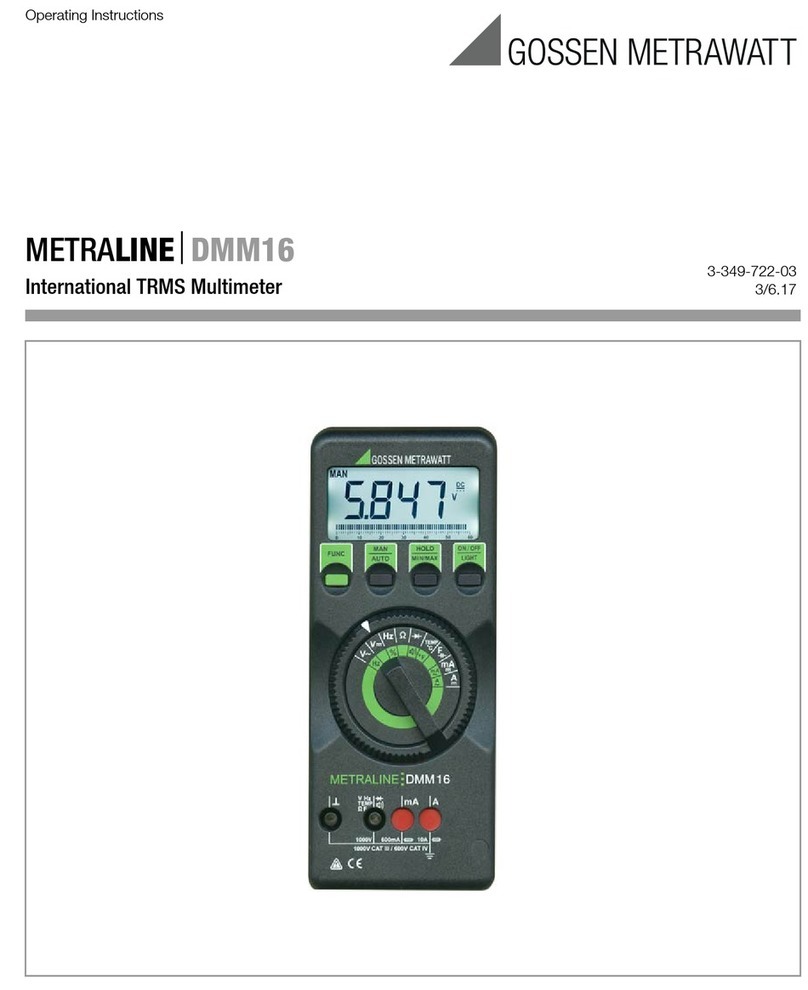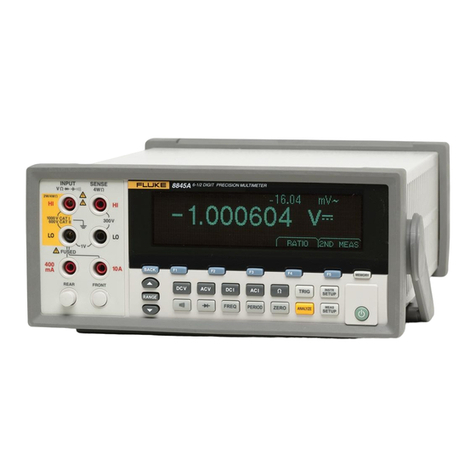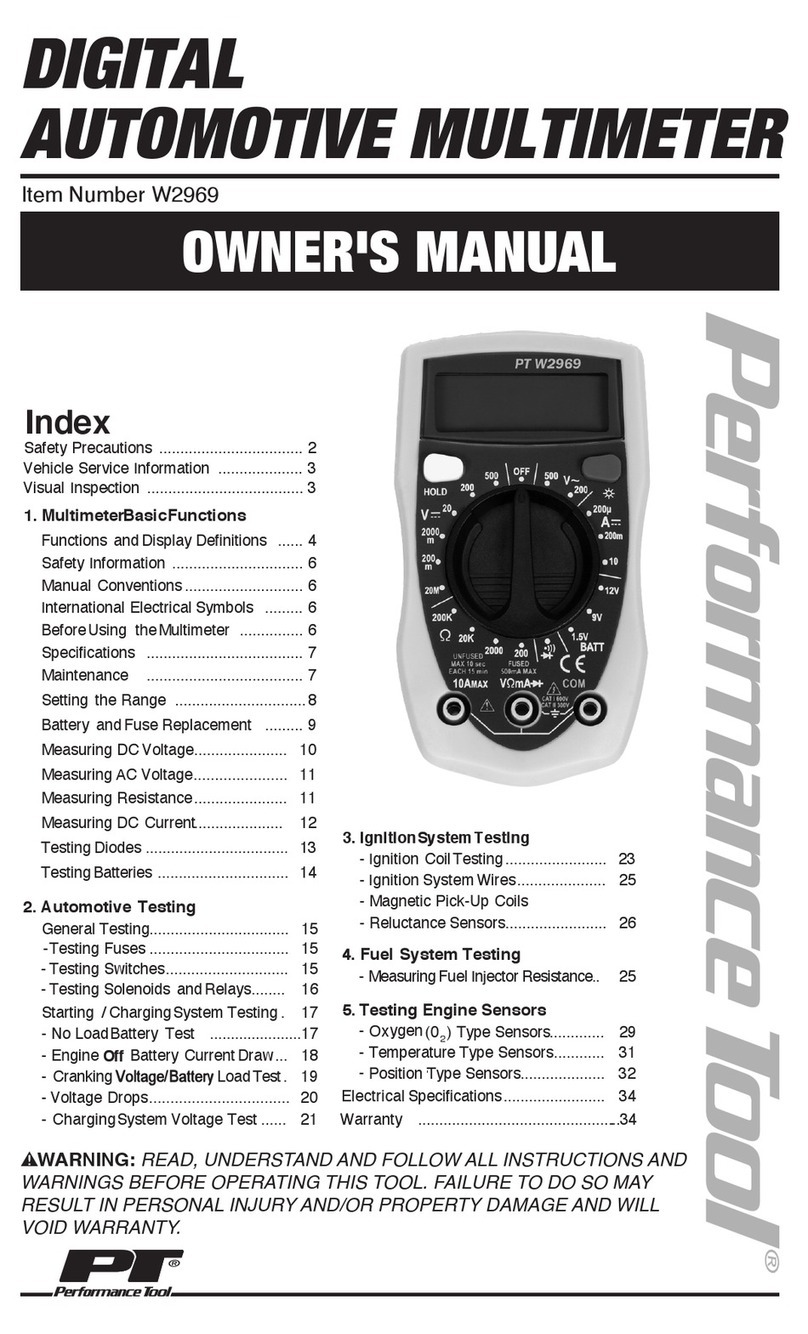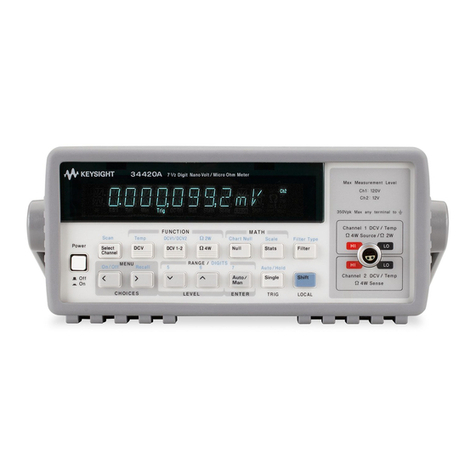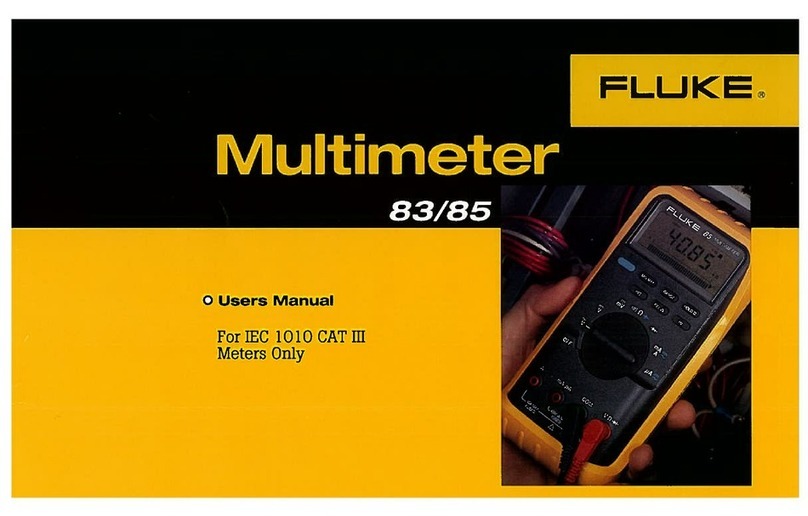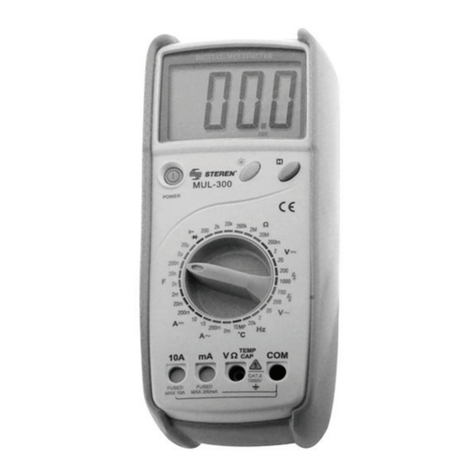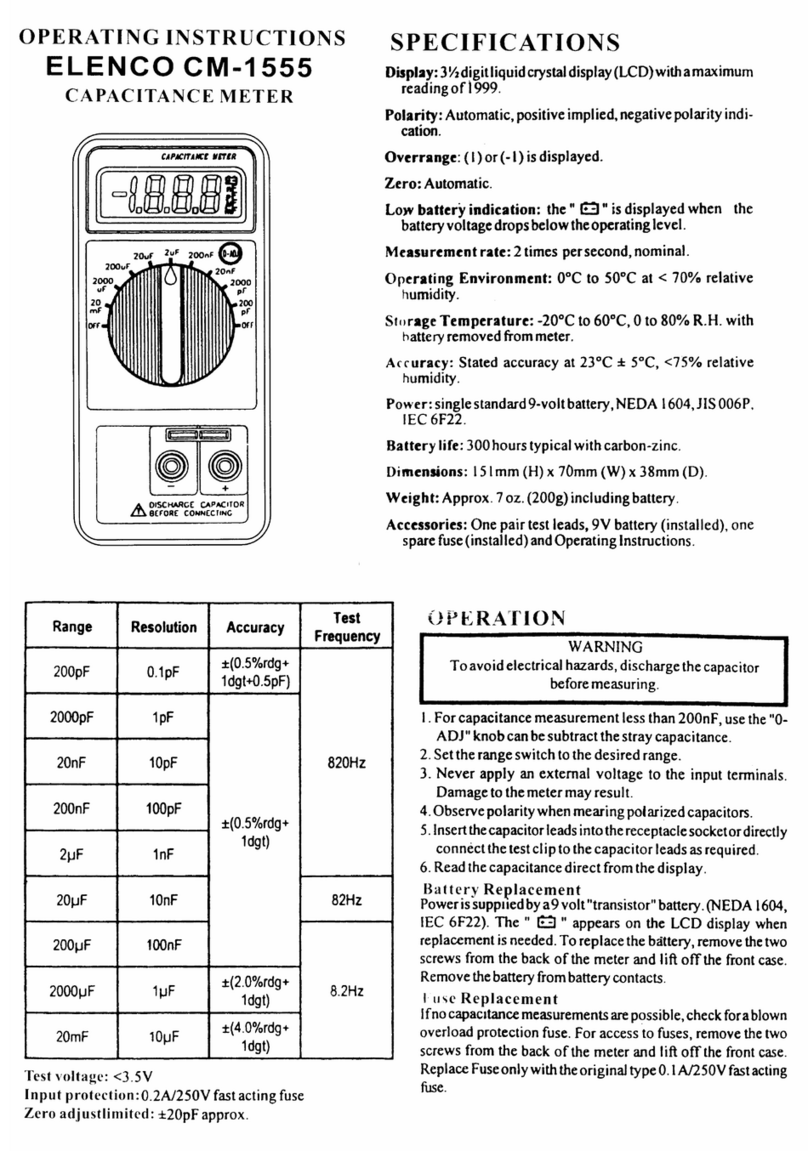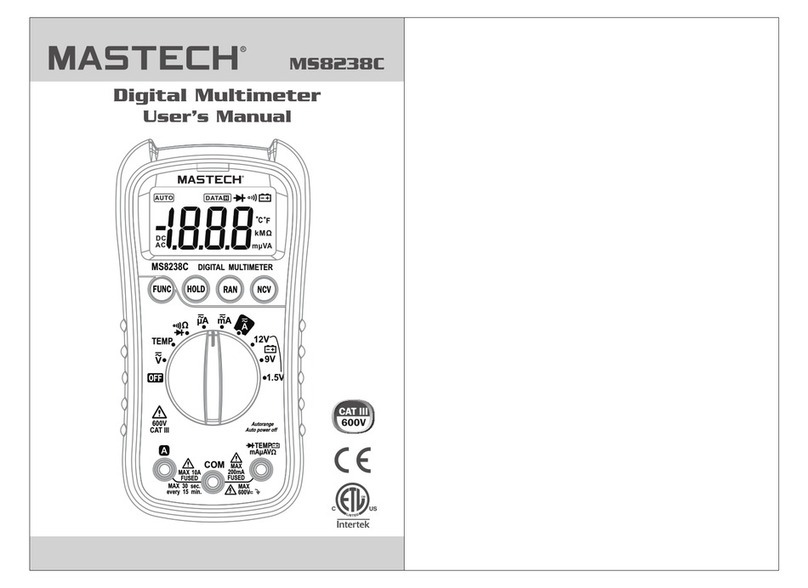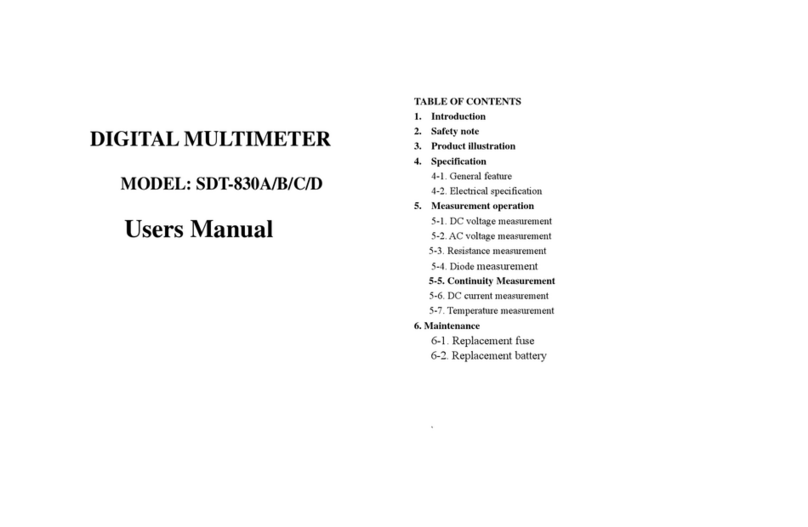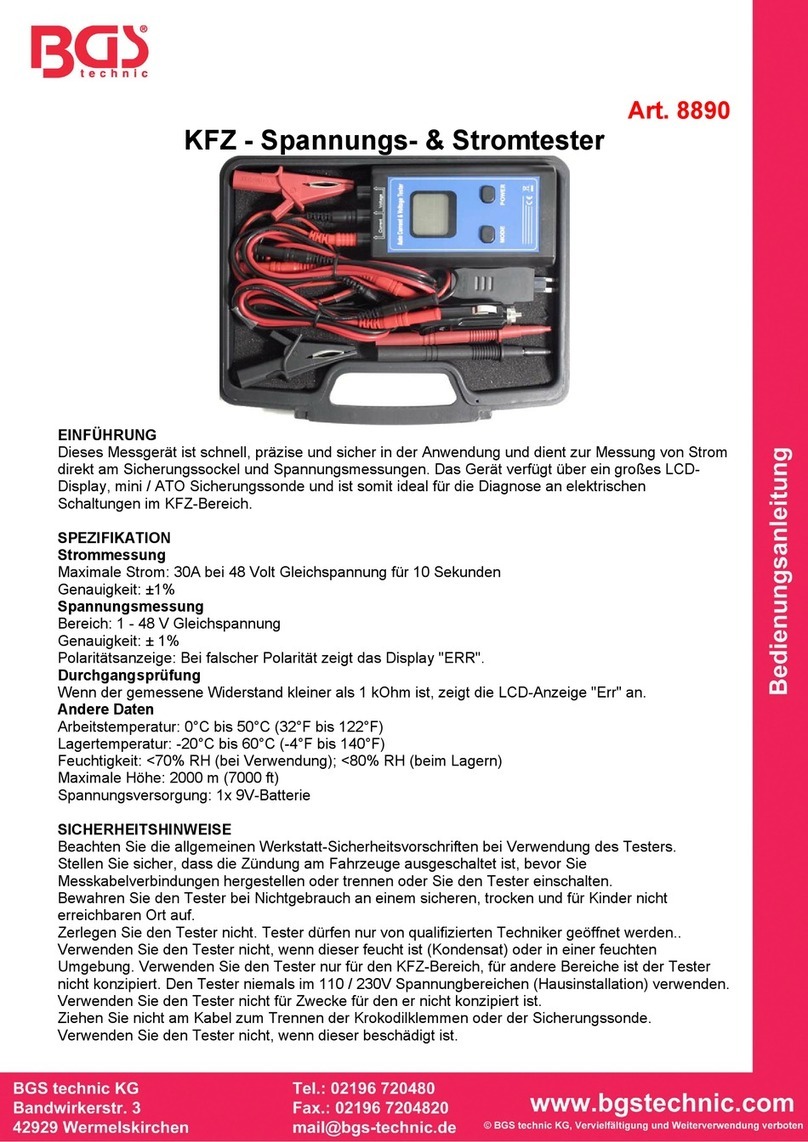
OVERLOAD PROTECTION: 500mA/250V fuse (10A range unfused).
MEASURING VOLTAGE DROP: 200mV
RESISTANCE
RANGE RESOLUTION ACCURACY
200Ω0.1Ω±(1.0% of rdg +10D)
2KΩ1Ω
±(1.0% of rdg +4D)
20KΩ10Ω
200KΩ100Ω
2MΩ1KΩ
MAXIMUM OPEN CIRCUIT VOLTAGE: 3V.
OVERLOAD PROTECTION: 15 seconds maximum 220Vrms. BATTERY AND FUSE REPLACEMENT
ACCESSORIES
Operator’s instruction manual
Set of test leads
9-volt battery
WARNING!
To avoid possible electric shock or personal injury, and to avoid possible damage to
the Meter or to the equipment under test, adhere to the following rules:
●
Before using the Meter inspect the case. Do not use the Meter if it is damaged or the case
(or part of the case) is removed. Look for cracks or missing plastic. Pay attention to the
insulation around the connectors.
●
Inspect the test leads for damaged insulation or exposed metal. Check the test leads for
continuity.
●
Do not apply more than the rated voltage, as marked on the Meter, between the terminals or
between any terminal & grounding.
●
The rotary switch should be placed in the right position & no any changeover of range shall
be made during measurement is conducted to prevent damage of the Meter.
●
When the Meter working at an effective voltage over 60V in DC or 30V rms in AC, special
care should be taken for there is danger of electric shock.
●
Use the proper terminals, function, & rangefor your measurements.
●
Do not use or store the Meter in an environment of high temperature, humidity, explosive,
inflammable & strong magnetic field. The performance of the Meter may deteriorate after
dampened.
●
When using the test leads, keep your fingers behind the finger guards.
●
Disconnect circuit power & discharge all high-voltage capacitors before testing resistance,
continuity, diodes or hFE.
●
Replace the battery as soon as the battery indicator appears. With a low battery, the Meter
might produce false readings that can lead to electric shock and personal injury.
●
Remove the connection between the testing leads and the circuit being tested, & turn the
Meter power off before opening the Meter case.
●
When servicing the Meter, use only the same model number or identical electrical
specifications replacement parts.
●
The internal circuit of the Meter shall not be altered at will to avoid damage of the Meter &
any accident.
●
Soft cloth & mild detergent should be used to clean the surface of the Meter when servicing.
No abrasive & solvent should be used to prevent the surface of the Meter from corrosion,
damage & accident.
●
The Meter is suitable for indoor use.
●
Turn the Meter power off when it is not in use & take out the battery when not using for a
long time. Constantly check the battery as it may leak when it has been using for some time,
replace the battery as soon as leaking appears. A leaking battery will damage the Meter.
OPERATING INSTRUCTIONS
DC & AC VOLTAGE MEASUREMENT
1. Connect red test lead to “VΩmA” jack, Black lead to “COM” jack.
2. Set RANGE switch to desired VOLTAGE position, if the voltage to be measured is
not known beforehand, set switch to the highest range and reduce it until
satisfactory reading is obtained.
3. Connect test leads to device or circuit being measured.
4. Turn on power of the device or circuit being measured voltage value will appear on
Digital Display along with the voltage polarity.
DC CURRENT MEASUREMENT
1. Red lead to “VΩmA”. Black lead to “COM” (for measurements between 200mA and
10A connect red lead to “10A” jack with fully depressed.)
2. RANGE switch to desired DCA position.
3. Open the circuit to be measured, and connect test leads INSERIES with the load in
witH current is to measure.
4. Read current value on Digital Display.
5. Additionally, “10A” function is designed for intermittent use only. Maximum contact
time of the test leads with the circuit is 15 seconds, with a minimum intermission
time of seconds between tests.
RESISTANCE MEASUREMENT
1. Red lead to “VΩmA”. Black lead to “COM”.
2. RANGE switch to desired OHM position.
3. If the resistance being measured is connected to a circuit, turn off power and
discharge all capacitors before measurement.
4. Connect test leads to circuit being measured.
5. Read resistance value on Digital Display.
DIODE MEASUREMENT
1. Red lead to “VΩmA”, Black lead to “COM”.
2. RANGE switch to “+” position.
3. Connect the red test lead to the anode of the diode to be measured and black test
lead to cathode.
4. The forward voltage drop in mV will be displayed. If the diode is reversed, figure “1”
will be shown.
TRANSISTOR hFE MEASUREMENT
1. RANGE switch to the hFE position.
2. Determine whether the transistor is PNP of NPN type and locate the Emitter, Base
and Collector leads. Insert the leads into the proper holes of the hFE Socket on the
front panel.
3. The meter will display the approximate hFE value at the condition of base current
10μA and VCE2.8V.
Fuse rarely need replacement and blow almost always as a result of operator error.
If “ ” appears in display, it indicates that the battery should be replaced.
To replace battery & Fuse (500mA/250V) remove the 3 screws in the bottom of the
case, simply remove the old, & replace with a new one. Be careful to observe polarity.
Discover other tool sets and kits on our website.
